Top 20 Livestream Alternatives: Everything You Need to Know in 2025
After almost two decades of streaming, the Livestream service is shutting down its digital door to users. In 2024, Vimeo announced its plans to stop operations at Livestream in January 2025. The company is still working on helping users migrate their accounts and videos over to Vimeo.com.
While many users are switching to Vimeo, an even greater number are looking for alternatives. This is a big change in the streaming space; streamers just want to know they won’t be left in the lurch without a platform to stream on.
Luckily, there are lots of Livestream alternatives that will meet and even exceed all your live-streaming needs. Not only are there other comparable Livestream alternatives, but many of the other streaming solutions out there are far better, one of them being Dacast.
So, let’s examine Livestream’s offerings more closely and explore the many alternatives available to consumers and broadcasters alike. We will also take an in-depth look at Dacast and other Livestream alternatives.
Specifically, we’ll compare 20 different video live-streaming solutions to help you find the right platform for your unique broadcasting needs. Just because one service is shutting down doesn’t mean there aren’t plenty of better ones ready to replace it. Let’s review the best 20 Livestream alternatives on the market that could better suit your business needs.
Table of Contents
- What Was Livestream?
- What Did Livestream Offer To Its Users?
- Advantages of Livestream by Vimeo
- What to Look for in a Livestream Alternative
- Alternatives to Livestream: Comparing Streaming Platforms with Similar Features
- Frequently Asked Questions
- Final Thoughts
What Was Livestream?
Livestream was Vimeo’s premium video streaming solution, mainly geared towards a professional audience. This made it different from Vimeo’s standard plans. It launched in 2007 under the name Mogulus and rebranded in 2009 as Livestream. The name was self-explanatory and to the point, attracting a large number of clients to the platform.
Then, in 2017, Vimeo acquired Livestream and immediately incorporated the live-streaming function into its features. Vimeo was previously known as a consumer-grade VOD platform for the creative market, mainly serving filmmakers, graphic designers, artists, etc. After the acquisition, Vimeo launched its own live-streaming service, Vimeo Live. We have a detailed Vimeo Live service review you can refer to.
In that review, we found that Vimeo Live is only a viable solution for companies with greater live streaming needs if the budget were not an issue, as it is one of the most expensive streaming solutions on the market.
However, Vimeo recently announced that it will permanently shut down Livestream in January 2025 and migrate its services to Vimeo. The company didn’t give a specific reason for this move, but speculation is that it is trying to consolidate its resources and focus on its core Vimeo platform.
What Did Livestream Offer To Its Users?
Before the shutdown, Livestream had around 50 million active viewers and hosted over 10 million live events yearly. We’ll examine some of Livestream’s top features, pricing, upload specs, and statistics to see what attracted users to this platform.
Stats and Facts:
- Livestream was owned by Vimeo
- Livestream was mainly geared toward enterprise users
- Vimeo has over 230 million registered users and 60 million content creators
- Vimeo Livestream served users in over 150 countries
- The top referrers to content on this platform are Patreon, Github, and Linktree
Top Features:
- Full-HD streaming: The platform offered high-quality video streaming compared to free platforms like YouTube.
- HTML5 video player: The platform’s world-class HHTML-5-based video player was a reason Livestream achieved such high-quality levels of video streams.
- Privacy and security features: Vimeo provided a high level of security compared to most free tools. For instance, a Digital Rights Management (DRM) feature was available as an add-on. However, its TTS security features were not high-end. It lacked some built-in protocols, including screenshot prevention, IP restriction, watermarks, and parental control.
- Monetization options: Livestream had a few subscription options to help digital content creators generate revenue from their platforms.
- Content management: Broadcasters could use Livestream’s robust video content management system to upload, organize, and encode videos seamlessly.
- Live streaming capabilities: Creators could live stream real-time and video-on-demand (VOD) content to any device.
Other top features:
- Easy embedding tools
- Tools for enhancing engagement
- Custom OTT applications
- Large storage capacity
- Video management service
- Upload from anywhere
- Seamless migration
Pricing:
Livestream offered three pricing plans for advanced broadcasting:
Advanced:
- Premium pricing: $65/month billed annually.
- Their Premium plan included live streaming and VOD services and was most suited for professional broadcasting.
Enterprise:
- Enterprise Pricing: Users had to contact Vimeo for custom pricing information.
- The Enterprise plan included white-label service, monetization, and video APIs. It also came with branding control and added security features.
- Custom pricing: Users had to contact Vimeo for custom pricing information.
- The OTT-specific pricing packages came with the Vimeo.com relationship and included all the basics for starting a web-based OTT channel and growing your OTT business online.
For more details, check out our comprehensive guide to Vimeo Livestream pricing.
Upload Guidelines and Specs:
- Recommended dimension: 720p (1280 x 720)
- Aspect ratio: 16:9, 4:3
- Max file size: 3GB
- Max video length: Information not available
- Total file storage: Information not available
- Compatible video formats: MP4 (recommended)
Advantages of Livestream by Vimeo
Here are some reasons why some creators and broadcasters considered Livestream by Vimeo in the first place.
- Easy content upload: Livestream allows users to seamlessly upload content from different sources, such as Google Drive and Dropbox.
- Sustainable monetization: The subscription payment model offered creators a steady revenue from their content.
- Access to reports: it provided analytical data from video performances to help users make data-driven decisions.
- Customizable video player: The Livestream video player had editing and customization options, such as adding your company logo and changing your preferred colors.
- Flexible bandwidth: Livestream’s plans included flexible bandwidth options, so users didn’t incur additional charges for extra bandwidth.
- Customer support: Livestream offered 24/7 customer support and access to their app launch team on the higher-end plans.
- Seamless migration: Minimal downtime when migrating your content to a new Livestream account, making the transition smoother.
The Downside of Livestream by Vimeo
While Livestream streaming software was an excellent option for many broadcasters, it was not a “one-size-fits-all” type of tool. Even before the announced shutdown, users considered some Livestream alternatives:
- High costs: The Livestream platform was loaded with tons of professional features and streaming capabilities. For that reason, it came with what some might consider a hefty price tag. Broadcasters with minimal streaming needs or tight budgets usually looked for alternatives to Livestream.
- Limited customization: Compared to some white-label video hosting platforms like Dacast, Livestream’s customization options were a bit limited, making it less suitable for branding or for businesses to customize their individual customer experiences.
- Limited bandwidth: Compared to some tools, Livestream had some bandwidth limitations, which sometimes affected the quality of videos when used with high-definition content or during increased traffic.
- Basic analytics: Compared to other platforms that provide advanced reporting features for in-depth viewer behavior research, engagement metrics, and geographical data, Livestream’s analytics were less extensive. This was especially true for the lower-tier plans.
- Marketing integration: Livestream’s limited marketing integrations made it more difficult to use video content for lead generation, customer relationship management, and marketing automation.
- Monetization options: Compared to other Livestream alternatives, Livestream’s monetization options were a bit more limited. This made the platform less suitable for generating income from sources such as advertisements, pay-per-view, memberships, etc.
- Limited location: Livestream didn’t deliver content to China. If a broadcaster is trying to reach viewers in China, they’ll need to look for a video streaming platform with an ICP license.
What Livestream Features Is Vimeo Keeping
Even if Livestream is no longer available as an independent platform, users can still get the same functionalities if they migrate to Vimeo. The company decided to keep Livestream’s core functionalities, including:
- Live Streaming: Vimeo still offers live streaming services so that users can host live events, webinars, and streams on the platform. Vimeo live streaming is now available in five tiers: Free, Starter, Standard, Advanced, and Enterprise.
- Event Management: Vimeo will integrate Livestream’s event management features, such as scheduling and ticketing, into its platform, allowing you to create and manage events easily.
- Advanced Analytics: Vimeo offers in-depth analytics for live streams, including real-time viewer stats and more detailed post-event reports, similar to what Livestream provides.
- Customizable Players: Vimeo will continue to offer the ability to embed custom livestream players with branding and other customizations.
- Monetization Options: Livestream users who were using monetization features like pay-per-view can still do so on Vimeo, including the option to charge viewers for access to live broadcasts or recorded content.
- Audience Interaction: Vimeo will keep features like live chat, comments, and other interactive tools to engage with viewers during streams.
In addition to these basic features, select Vimeo plans include additional features such as:
- Simulating a live event with pre-recorded videos
- Running concurrent streams and simulcast to up to 10 integrated destinations and up to 20 custom RTMP destinations.
- Fail-safe streaming and stream health monitoring, as well as QC features.
- Improving the viewing experience with breakout rooms, embeddable widgets, live chat, polls, etc.
What to Look for in a Livestream Alternative
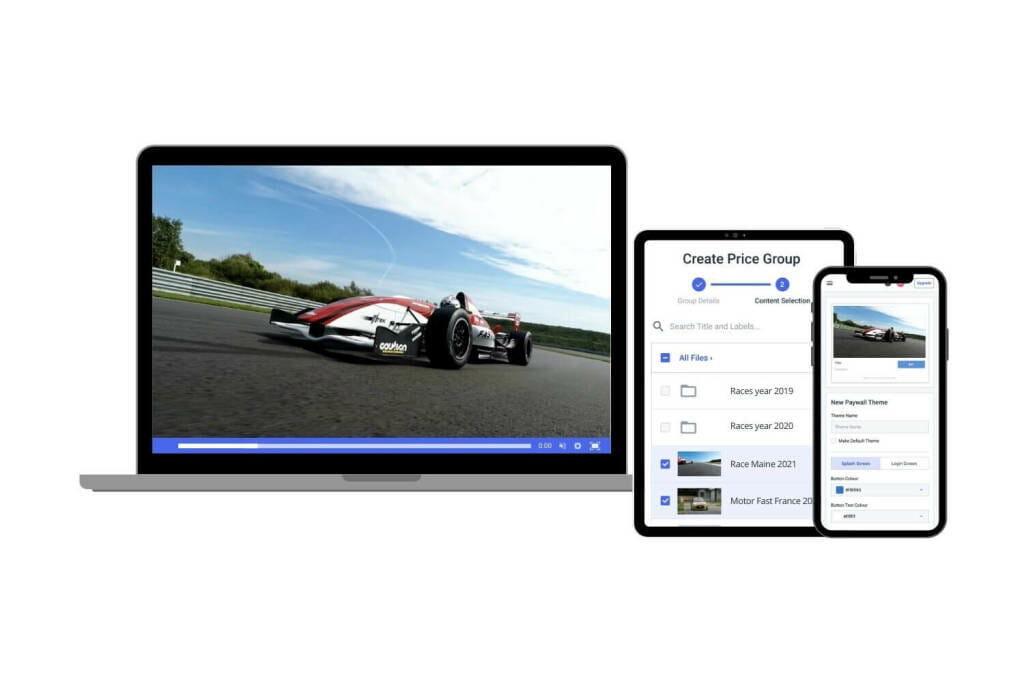
Now that you know what attracted consumers and broadcasters to Livestream in the first place, you can start looking for the same or even better qualities in other streaming platforms. We will examine some specific features of Livestream so you can have a reference point when assessing other popular live-streaming platforms.
Reliable Content Distribution
One of the challenges for any video platform is efficiently delivering video to viewers. Typically, broadcasters manage this via a content delivery network (CDN). When used properly, a video CDN delivery can minimize buffering and reduce video start-up times, which are essential to keeping viewers engaged.
For the most part, Livestream used its own internal network of servers, which is much lighter than a professional live-streaming CDN. This can also explain why some reviewers reported that Livestream’s servers occasionally failed during live events.
Livestream alternatives like Dacast, Brightcove, and JW Player all partner with the Akamai CDN to avoid such inconveniences. Akamai is the largest CDN in the world, with more than 1,700 networks and 216,000 cloud servers located in 130+ countries globally. No video streaming CDN has more experience or a more robust network than Akamai, which ensures reliable delivery and minimizes problems for Dacast users.
Dacast also partners with additional CDNs to maximize coverage and reliability. That’s part of the reason Dacast is the better alternative in a direct Dacast vs Livestream comparison. Currently, the main CDN on record for Vimeo is Fastly. However, the company also uses other CDNs to supplement video delivery in high-traffic areas.
Kaltura can operate with a variety of CDNs, depending on each broadcaster’s individual choice. However, Kaltura streams reach viewers via an internal network of streaming servers and undisclosed CDN partners.
Encoder Compatibility
Livestream was not very flexible regarding encoder choices. It had its own proprietary live stream encoding software, which is the only option broadcasters could use for live broadcasting on a Premium plan. They had to purchase an Enterprise plan to use a third-party RTMP encoder, which was quite pricey.
Dacast and other online video platforms that use RTMP Ingest are compatible with almost any RTMP-capable encoder. Livestream alternatives like JW Player Live, Kaltura, and Brightcove also fall into this category.
This includes free software applications like OBS Studio and professional live broadcasting software like vMix, Wirecast, and VidBlasterX. Dacast also supports many hardware encoders, ranging from mobile camera-mounted units to studio-grade rack-mount encoders.
Social Streaming
Broadcasters should note that while Livestream did advertise the ability to stream to Facebook, users couldn’t stream to the Livestream platform and Facebook simultaneously without the help of an external tool. They had to choose to stream to one or the other, which many broadcasters considered a significant drawback.
If simulcasting is important for your business, choose a platform that supports multiple outputs. Dacast is one platform with these capabilities.
Customer Support
Livestream customers only received email support, which was responded to within one hour on weekdays, and chat support during US business hours. Similarly, the Premium plan only included basic email support. Livestream also restricted phone support to custom-priced Enterprise plans.
In contrast, some Livestream alternatives offer more reliable customer support. Dacast, for instance, offers 24/7 customer support for all users and phone support for Premium and Enterprise plan users. 24/7 support is rare in the live-streaming world.
Vimeo’s current support includes round-the-clock global assistance and a chat feature.
Pricing
We will go further into pricing as we review each Livestream alternative, but live-streaming pricing is something to keep in mind. You need to make sure that you’re choosing an option that makes sense in terms of your budget and intended ROI.
Consider if the features you get from your alternatives offer value for your money.
Alternatives to Livestream: Comparing Streaming Platforms with Similar Features
Even if Livestream is the main way you stream and broadcast content, there are still other options you can easily switch to. There are many streaming platforms on the market that serve as equal or better alternatives to Livestream. Let’s take a look at a few Vimeo Livestream alternatives for professional broadcasting.
1. Dacast

Overview and Company History:
The first alternative and in-depth review we’ll give you is Dacast vs Vimeo. Dacast is a B2B streaming solution that delivers high-quality video content around the world for broadcasters with a wide range of budgets. Dacast was founded in 2008 and had its global launch in 2010. Currently, its HQ is located in San Francisco.
Dacast is a unified streaming solution that, according to 2021 Streaming Media Magazine’s Top 50 List, belongs up there with the most important, innovative, and interesting online video tech companies. It’s a powerful platform that helps companies around the world scale and monetize their online video content.
In 2019, Dacast expanded its functionalities by acquiring the vzaar platform, which gave it the ability to host video-on-demand (VOD) content. This acquisition has made Dacast a truly unified streaming solution and one of the few services to offer real streaming delivery in China.
Basic Functionality:
Dacast is a comprehensive streaming platform that hosts live and on-demand video content. The platform is equipped with hosting, monetizing, embedding, organizing, and more tools. It caters to a wide range of broadcasting needs, from simple live event streaming to complex, high-volume video hosting. It also has its own solution for OTT live streaming.
Key Features:
Some key features help Dacast stand out as a strong Livestream alternative. Here is a breakdown of a few of the reasons why Dacast may be your new choice for streaming:
Global Content Delivery
When it comes to live streaming, reaching a global audience can really help you expand your reach. Dacast uses top-tier CDNs so you can get your content around the globe to your viewers easily. Dacast has a global reach, allowing businesses to broadcast and host live and on-demand video content to viewers anywhere in the world without restrictions.
China Content Delivery
You need special permissions and licenses to live stream directly to China, which Dacast has. It also has a working broadcasting infrastructure on the ground, which helps users deliver quality streams to a Chinese audience.
24/7 Tech Support
You can start a live stream anytime and need a support team that can be there whenever you need it. Dacast offers 24/7 live chat and email support for all plans. Dacast understands how important it is to offer 24/7 support to all users, regardless of plan level. They also have an active LinkedIn group where you can find tips and support from actual users.
Live Encoding Support
Dacast offers live encoding support for all of the top video encoders, which is something Livestream never offered. You can work with whatever encoder you are most comfortable with as long as they output into RTMP or HLS. If you’re unsure how to use an encoder, Dacast has a handy guide to help you.
Monetization Ability
Video content can be a great way to make money, and Dacast offers SVOD, AVOD, and TVOD monetization options. It provides users the opportunity to monetize VOD and live content.
Customization
With Dacast, you can customize your experience with Player API and Video API.
Technology Tools
There are lots of technology options available with Dacast, such as:
- Top-notch privacy and security tools
- Adaptive multi-bitrate streaming
- Cloud-based video transcoding
- Expo galleries video portal
- Real-time video streaming analytics
New!
- Multi-user access on Scale and Custom plans
- Zoom live streaming integration for meetings and live events in real-time
- Expo 4.0 galleries video portal for immersive video experiences
Pros:
- Live streaming and VOD streaming are available on all pricing plans
- Unlimited concurrent viewers
- Zoom integration for P2P streaming
- Unlimited live channels
- White-label and branding customization
- Easy to embed HTML5 video player
- SVOD, AVOD, and TVOD monetization options
- Mobile device support
- Live stream recording
- China Video Hosting
- Plans for every budget
Cons:
- It requires a bit of a learning curve due to so many accessible and advanced features
Upload Guidelines and Specs:
- Minimum dimension: none (but 240p is the recommended minimum)
- Maximum dimension: 1080p or 4K (depends on the user’s hardware and internet)
- Video aspect ratio: no restrictions (but 16:9 is the default)
- Max file size: none
- Max video length: none
- Total file storage: 10-1000GB (depends on plan)
- Compatible video formats: MP4 (preferred), MOV, M4V, M2V, AVI, MPG, FLV, WMV, MKV, WEBM, OGV, MXF, ASF, VOB, MTS
Pricing:
Dacast offers four pricing plans for professional broadcasters, including:
- Starter: $39/month (billed annually); ideal for newcomers with 2.4 TB of bandwidth and 500 GB of storage per month. It also includes 24/7 support and advanced analytics.
- Event: $63/month (or $750/year); ideal for organizations that don’t want to be tied down with a contract and prefer to purchase bandwidth separately to live stream an event; 6 TB of bandwidth upfront, 250 GB of storage; you can add additional data and storage as needed. It allows users to integrate a paywall and include pre, mid and post roll in their video content.
- Scale: $165/month (billed annually); includes 24 TB of bandwidth per year, with 2TB of storage; you can add phone support, monetization paywall, an M3U8 online player for live channels, ad insertion, white-label video player, and video API access.
- Custom: Custom-priced; designed for enterprises with high-volume streaming needs; it includes custom SLAs and M3u8 links for live channels and VOD.
Broadcasters can contact Dacast directly to learn more about our 30-day free trial or for a custom quote for high-volume plans.
Dacast offers a more robust Content Delivery Network, and more affordable pricing, making it one of the best Livestream competitors.
2. Brightcove
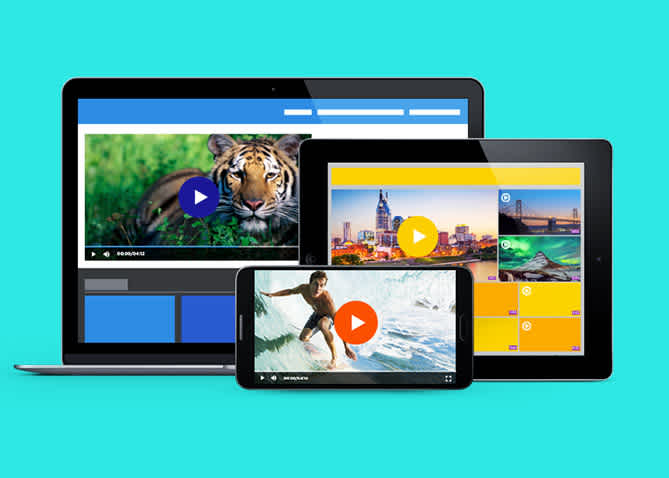
Overview and Company History:
Brightcove was founded in 2004, making it a long-time player in the broadcasting game. This Livestream alternative offers cloud transcoding, live streaming, and VOD hosting.
In 2019, Brightcove acquired the streaming platform Ooyala, which is known for its cloud video technology. After the acquisition, Brightcove announced its end-of-life plans for the Ooyala OVP, similar to what’s currently happening with Vimeo and Livestream.
Basic Functionality:
Brightcove’s platform includes cloud video hosting, an innovative video player, server-side ad insertion, live streaming video, an encoder for cloud transcoding, and monetization tools. Its customizable HTML5-based video player can match a website or app’s branding and user interface.
It supports many features, including playback controls, captions, annotations, and smart TV streaming via OTT.
Key Features:
Brightcove has a few features that make it stand out as a strong Livestream alternative.
Video analytics
If you want to learn from your video’s performance, Brightcove offers advanced video analytics. They provide valuable feedback about how your content is performing, which you can use to drive your content strategy forward.
You can track viewer engagement, video performance, and audience behavior. This includes metrics like watch time, play rate, and viewer geographic location.
Marketing tools
Brightcove can integrate with numerous marketing tools, making it a great video hosting platform for businesses that use video content to achieve their marketing goals. They also offer lead generation support to further your marketing efforts.
Server-side ad insertion
Brightcove offers server-side ad insertion if you want to monetize your content through advertisements.
Social Sharing
With Brightcove, you can easily share content across social media platforms, expanding reach and engagement.
In addition to the above features, Brightcove also offers live streaming and VOD hosting, cloud transcoding, and adaptive bitrate streaming.
Pros:
- Powerful analytics
- Variety of business tools
- Custom video portals
- CRM integration
Cons:
- High price point
- Live streaming capabilities are limited to expensive plans
- Monetization is limited to custom-priced plans
- No China video delivery
Upload Guidelines and Specs:
- Minimum dimension: Determined by the user
- Maximum dimension: Determined by the user
- Aspect ratio: No restrictions (since Brightcove uses a responsive player)
- Max file size: No limits on file sizes
- Max video length: No published limits
- Total file storage: Varies by plan
- Compatible video formats: MP4, MOV, FLV, AVI, WMV, MKV, 3GPP
Pricing:
Brightcove’s pricing is no longer posted, but plans include basic video marketing tools and analytics with SD streaming quality for unlimited viewers. Right now, Brightcove is offering three different studio packages:
- Marketing Studio: It comes with three tiers: Starter, Essential, and Premium. All tiers include CMS integrations and some sort of customer support.
- Communications Studio: This package only has two tiers: Essential and Premium. Both provide users with basic encryption, support, and in-depth analytics.
- Media Studio: This last package also has two pricing tiers: Essential and Premium. You can expect advanced analytics, as well as integrated player management and SDKs.
As one of the Livestream alternatives, Brightcove’s plans can also be pricey, especially for the Premium tiers; however, they do offer powerful analytics and marketing tools.
3. StreamShark
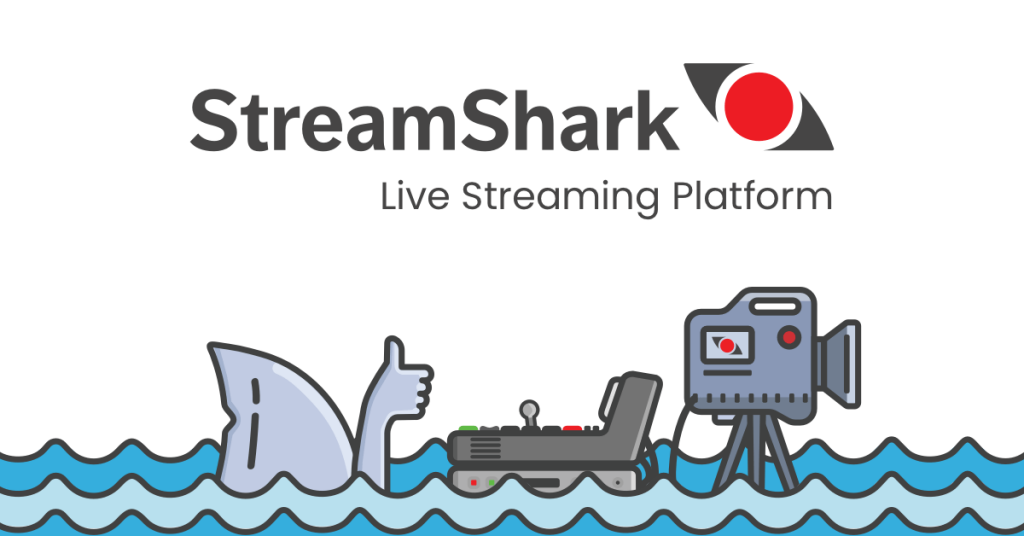
Overview and Company History:
StreamShark is another phenomenal Livestream alternative. This streaming solution was founded in 2011 and provides multi-faceted online video functionality. It makes it easy for businesses, content creators, and organizations to deliver high-quality live and on-demand video content.
StreamShark is similar to Livestream in the sense that its plans are primarily geared toward broadcasters with professional streaming needs. However, StreamShark also has some more innovative features, including 360 live streaming and enhanced security features.
Basic Functionality:
StreamShark is a B2B and B2C video hosting platform. It supports multiple protocols, including HLS and RTMP. Users can also integrate with CRMs, marketing tools, or other systems using their APIs.
Key Features:
StreamShark offers a few key features that make it a good Livestream alternative.
360-video
If you want to offer a 360-degree viewing experience for our viewers, you can do that with StreamShark’s 360-degree video feature. Their 360 video player works well on desktop and mobile. It’s also compatible with select VR sets, like the Oculus Rift.
Mobile Streaming
You can start and share mobile streamings using their customizable HTML5 video player.
Multi-Device Streaming
StreamShark is compatible with many different viewing devices, including smartphones, tablets, laptops, and smart TVs. It automatically adjusts video quality based on the viewer’s device and network conditions for optimal viewing.
Multistreaming
Streamshark is also capable of rebroadcasting a stream on multiple channels at once. Users can simultaneously broadcast on Facebook, YouTube, Twitch, or a custom server.
A few more notable key features of StreamShark include:
- HLS ingests for an end-to-end HLS streaming setup
- Global content delivery via a multi-CDN network
- P2P live streaming
- VOD2Live – Simulated live streaming
Pros:
- Localized media ingestion
- Multiple monetization options
- Video transcoding tools
- Innovative video hosting tools
Cons:
- No real technical support
- No embeddable playlists
- No China video delivery
Upload Guidelines and Specs:
- Minimum dimension: 240p (426 x 240)
- Maximum dimension: 1080p (1920 x 1080)
- Aspect ratio: 16:9, 4:3
- Max file size: not available
- Max video length: not available
- Total file storage: 500GB, 1TB, 3TB
- Compatible video formats: HLS, WebM VP9, WebM VP8, WebM VP9 DASH, MP4
Pricing:
StreamShark’s live-streaming plans start at $199 per month and include the following tiers:
- Standard: $199/month; includes 1,000 GB of bandwidth and 1,500 viewer hours; overage charges of $0.10/GB
- Team: $499/month; includes 4,000 GB of bandwidth and 6,500 viewer hours; overage charges of $0.09/GB
- Business: $999/month; includes 9,000 GB of bandwidth and 13,500 viewer hours; overage charges of $0.08/GB
- Enterprise: Please contact StreamShark for their custom enterprise solutions and plans
StreamShark is an ideal alternative to replace Livestream if you want a live streaming solution that offers 360 live streaming and enhanced security features.
4. IBM Cloud Video

Overview and Company History:
IBM Cloud Video is yet another great Livestream alternative. This platform was formerly known as Ustream before IBM acquired it in 2019 and rebranded. The original platform was founded in 2007 to help members of the military connect with their loved ones back home.
The current iteration of the platform is cloud-based and offers video hosting and cloud video streaming solutions. It’s suitable for small and large-scale events and offers tools for video analytics, monetization, and audience engagement.
Basic Functionality:
The basic functionality of IBM Cloud Video is live streaming. However, the platform offers video-on-demand services and video hosting. It also provides auto-archiving, which records streams and makes them available for on-demand playback.
Key Features:
- Streaming up to 720p resolution on most plans
- Mobile-compatible video player
- Internal CDN for content distribution
- Video distribution and workflow
- OTT video management
- Enterprise video streaming
- Monetization support
- Customizable video portals
Pros:
- Powerful hosting and management platform
- Reliable customer support
- Wide range of features for broadcasters
- Hong Kong video hosting
- Multi-CDNs
- Live playlists with looping
Cons:
- Only expensive plans support 1080p full HD streaming
- Limited captioning support
- Customization via API is restricted to more affordable plans
Upload Guidelines and Specs:
- Minimum dimension: 480p (480 x 270)
- Maximum dimension: 4K (3840 x 2160)
- Aspect ratio: No published aspect ratio
- Max file size: 4 GB
- Max video length: No published limits
- Total file storage: 1TB – 5TB (depends on plan)
- Compatible video formats: MKV, MP4, MOV, FLV, AVI, WMV, MPEG2, H264, H263, MPEG4, VP6, VP8, THEORA, WMV, MP3, AAC-LC, NELLYMOSER, PCM, SPEEX, VORBIS, WMA
Pricing:
IBM Cloud Video streaming prices come in three tiers, including a free trial:
- Trial: Free 30-day trial
- Silver: Starting at $145.00/month; includes 1TB video storage and 100 viewer hours.
- Gold: Starting at $729.00/month; includes 2TB video storage and 2,000 viewer hours.
- Platinum: Starting at $1,460.00/month; includes 5TB video storage and 5,000 viewer hours.
The prices for the enterprise streaming plans range from $847 to $4999 per month. They include:
- Trial: Free 30-day trial
- Enterprise Silver: $847.00/month; includes 1TB video storage and 1,000 viewer hours.
- Enterprise Gold: $2,120.00/month; includes 3TB video storage and 5,000 viewer hours.
- Enterprise Platinum: $5,300.00/month; includes 5TB video storage and 15,000 viewer hours.
- Custom: Contact IBM for more information.
IBM Cloud is a Livestream competitor that offers robust monetization support and a strong content delivery platform.
5. JW Player

Overview and Company History:
The JW Player project began in 2005 as an open-source technology that was used to support YouTube’s early video player. JW Player is now a full-blown streaming solution for professional use. It’s a popular video player and streaming platform you can use to embed and stream video content on websites and applications.
In October 2024, JW Player and Connatix merged to bring consumers what they are calling “The Industry’s Largest Video Technology and Monetization Platform”.
This solution is known for its HTML5 video player for VOD streaming.
Basic Functionality:
JW Player offers video hosting services and live streaming support. It works with HLS and RTMP to deliver live content. The player is fully responsive, meaning it adapts to different screen sizes for mobile, tablet, and desktop devices.
It also supports adaptive bitrate streaming, which automatically adjusts video quality based on the viewer’s internet connection.
Key Features:
- Unified streaming solution
- Tools for engagement
- Support for monetization (AVOD)
- Advanced analytics
- Multi-bitrate and adaptive streaming
- Global content delivery
- Customization via video API
- Only custom-priced Enterprise plans offer DRM
Pros:
- Reliable video player
- The platform is easy to navigate
- Powerful advertising and analytics tools
Cons:
- Live streaming is limited to custom-priced plans
- Only ad-based monetization
- Only basic security tools
- No China video delivery
Upload Guidelines and Specs:
- Minimum dimension: 360p (640 x 360)
- Maximum dimension: 1080p (1920 x 1080)
- Aspect ratio: 16:9, 4:3, 2.39:1
- Max file size: 25GB
- Max video length: 6-hour live streams
- Total file storage: 25GB to 500GB (depending on the plan)
- Compatible video formats: MP4, WMV, AVI, MOV, 3GP, FLV
Pricing:
JW Player has pricing plans that range from free with a non-commercial license to paid with numerous benefits and features. They offer four packages: Stream, Play, Engage, and Monetize, but their prices aren’t posted online. To get a specific offer, users must contact the JW Player sales team.
JW Player is an alternative live-streaming service that has a free trial plan and a low-cost starter plan. It is easy to use and great for beginning broadcasters.
6. Kaltura
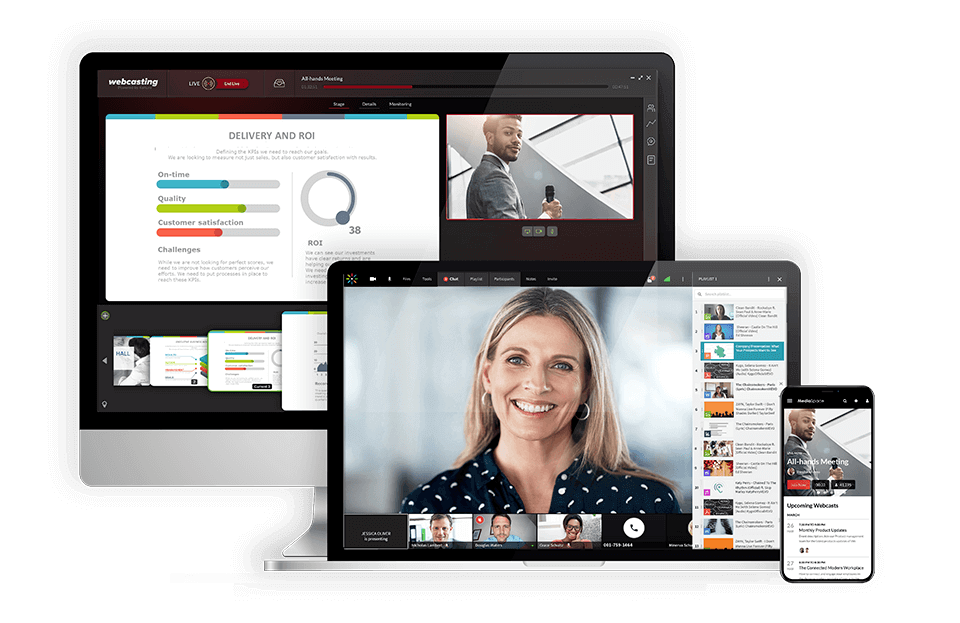
Overview and Company History:
Kaltura is an open-source online video platform that launched in 2007. It’s mostly built as a streaming solution for institutions and organizations with large budgets. Kaltura offers video hosting and OTT services to clients who primarily want a platform for webinars and similar virtual events.
Historically, this company has worked most extensively with educational institutions, but it is a viable option for any professional broadcaster with advanced streaming needs. This platform is a great Livestream alternative for broadcasters who are looking for a more customizable solution.
Key Features:
- Live streaming support and VOD hosting
- Secure content delivery
- Cloud video transcoding,
- Tools for live video production
- Business tools (marketing and more)
- Customization via APIs and SDKs
- Multi-bitrate and adaptive streaming
- Monetization support (AVOD, TVOD, SVOD)
Pros:
- Supports almost any feature imaginable
- Totally customizable streaming experience
- Several monetization options
- Robust security tools
Cons:
- Ticket-based system for support
- Highly complex due to customizations
- Not a great option for inexperienced broadcasters
- No support for video delivery in China
Upload Guidelines and Specs:
- Minimum dimension: 180p (320 x 180)
- Maximum dimension: 1080p (1920 x 1080)
- Aspect ratio: 16:9, 4:3
- Max file size: 2GB
- Max video length: Not available
- Total file storage: 10GB to Unlimited (depends on the plan)
- Compatible video formats: MOV, MP4
Pricing:
Prices are based on the solutions you’re looking for. These billed monthly plans include:
- Limited trial: $1 for two webinars
- Business: $199/month (or $150/month when billed annually)
- Enterprise: Custom pricing
- Free trial: 14 days; up to 25 participants per session
- Basic: $19/month (or $17/month when billed annually); up to 8 participants per session and 8 hrs of cloud recording
- Pro: $55/month (or $50/month when billed annually); up to 25 participants per session and 15 hrs of cloud recording
- Business: $125/month (or $115/month when billed annually); up to 100 participants per session and up to 25 hrs of cloud recording
- Business Plus: Custom pricing for up to 300 participants per session, unlimited sessions and custom storage needs
- Annual discounts: Discounted pricing packages available for any scale and use-case, enterprise SLA, and developer support
- Limited trial account: $1 for $100 worth of credits for 30 days for testing and experimentation, with no commitments
- Pay as you go – You pay only for what you use at these credit levels:
- Base plan: $20 one-time annual fee + monthly usage fees
Other services include virtual events, video portal town halls, video messaging, meetings, and more.
Kaltura is a great Livestream studio alternative for educational users who want a plan with custom features that support a learning environment.
7. Muvi
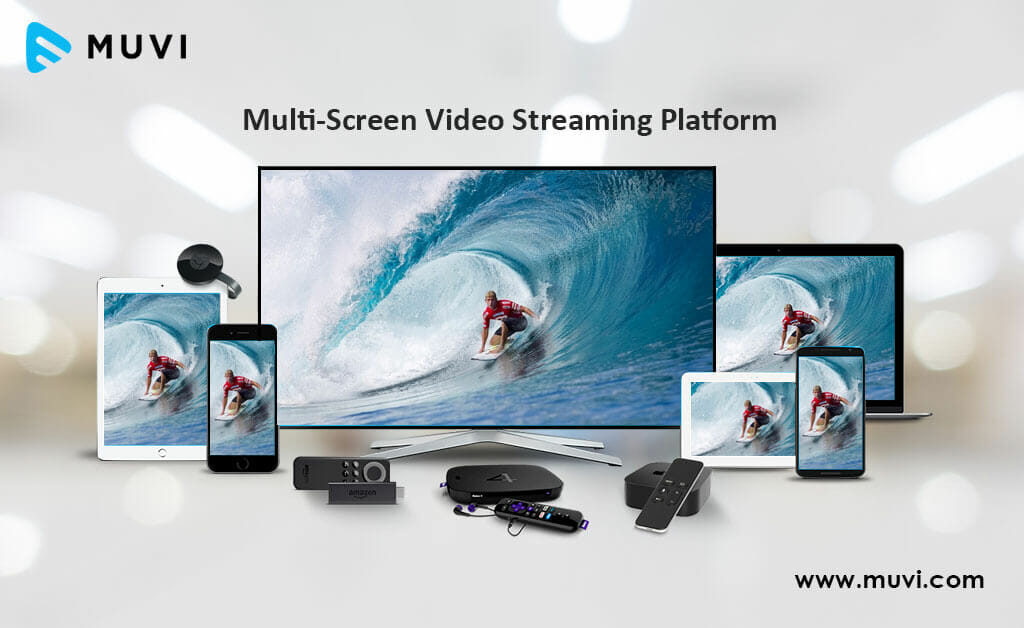
Overview and Company History:
Muvi is a Livestream alternative that provides a comprehensive solution for video-on-demand, live streaming, and OTT services. It’s mostly geared towards broadcasters who are ready to start a streaming service in a short period of time. It offers many features that will help you not only launch but operate and scale your own video streaming platforms.
Muvi is equipped with the tools OTT broadcasters need for hosting, monetization, and more.
Basic Functionality:
Muvi’s functionality is a little bit different than Livestream’s since it is focused primarily on OTT. It also allows users to fully customize their video streaming platforms with their own branding, themes, and user interface.
Key Features:
- HTML5 all-device video player
- White-label service and branding control
- Various monetization options for OTT streaming
- Support for video and audio streaming
- Dashboard management CMS for naming and organizing content
- 24/7 technical support
- DRM and security features
Pros:
- Reliable content delivery
- OTT video hosting
- Easy setup with no coding required
- Powerful video CMS
- Transcoding tools
- DRM video security
- Streaming website and app development tools
Cons:
- The platform is not completely user-friendly
- Difficult to integrate external programs
- CMS user interface is complex
- No China video delivery
Upload Guidelines and Specs:
- Minimum dimension: 144p (256 x 144)
- Maximum dimension: 4K (3840 x2160)
- Aspect ratio: 16:9, 4:3
- Max file size: not available
- Max video length: not available
- Total file storage: 1TB, 2TB, 5TB (depending on plan)
- Compatible video formats: MP4, MOV, MKV, FLV, VOB, M4V, AVI, 3GP, MPG
Pricing:
Muvi offers several pricing packages, depending on what you’re planning to use it for. If you want to build your own streaming platform, you’ll need Muvi One, which offers the following four payment tiers :
- Standard: $399/month (+ $299/month per app + infra fees), allows 2000 concurrent viewers, 1TB of bandwidth and storage each, and API support.
- Professional: at $1,499/month (+ $499/month per app + infra fees), increases limits further and adds premium support.
- Enterprise: $3,900/month (+ $499/month per app + infra fees) adds a dedicated server with auto-scaling.
- Ultimate: Custom Pricing
If you’re interested in doing live streams, Muvi Live offers the following:
- Standard: $99 /month for unlimited events, meetings, and viewers.
- Professional: $299/month for everything in the standard tier plus 4K streams, ads, and additional security.
- Enterprise: $799/month for everything in the professional tier plus 27/7 support and full customization.
Muvi is a solid alternative to Livestream.com if you need to start broadcasting quickly.
8. Panopto

Overview and Company History:
Panopto is a Livestream alternative widely used by educational institutions, businesses, and organizations. Founded in 2007 by two professors at Carnegie Mellon University in Pittsburgh, it aims to deliver an “internal YouTube” experience. It allows users to record, stream, and share videos, especially for educational or training purposes.
Panopto serves an audience of over 5 million end-users in the e-learning space.
Basic Functionality:
Panopto’s basic functionality differs from Livestream in that it is specifically geared towards educational institutions. This online video streaming solution enables streaming, sharing, recording, and managing video content. It can capture video and audio from various sources, including webcam feeds, screen recordings, and presentations.
Key Features:
- Secure video CMS
- Auto-archiving tools
- Video SEO
- API access
- LMS/CMS integration
- Lecture-capture and video-search software
- Access control & security features
- White-label video player
- AI video tools
Pros:
- Video and audio content hosting
- Insightful analytics
- Document indexing and full-text search for an organization
- Branding customization
- Asset Categorization
- China video delivery
Cons:
- Designed for education broadcasters, not business broadcasters
Upload Guidelines and Specs:
- Compatible video formats: AVI, MP4, MPG, WMV, MOV, QT, ASF, 3GP, WMA, MP3, M4V
- All other upload guidelines and specs are only available to paying customers.
Pricing:
Please contact Panopto for their custom pricing plans, which the company doesn’t publish on their website. After establishing a contract, you have access to unlimited streaming and storage.
Panopto is a strong live-stream option for educational broadcasters. It offers users a free basic plan and a pro plan for educational institutions.
9. Vidyard

Overview and Company History:
Vidyard is an all-in-one video platform that helps businesses professionally share videos. You can use it to easily create personalized videos, track engagement metrics, and integrate videos into your website or other digital platform.
The company offers packages focused on marketing, sales, and corporate communications. These additional offerings make it a superior Livestream alternative.
Basic Functionality:
Vidyard is a video hosting solution designed to generate revenue. Sales teams use it to create personalized video messages for potential clients, and marketing teams use it to produce product demos, customer testimonials, and promotional videos.
Key Features:
- Engagement boosting tools
- Video SEO
- Tools for organization and customization
- Insightful video analytics
- Robust video security features
Pros:
- Supportive user community
- Reliable tech support
- Multitude of features
- In-depth analytics and reporting
Cons:
- Inconsistent user experience
- Complicated backend portal
- No support for video delivery in China
Upload Guidelines and Specs:
- Minimum dimension: 360p (480 x 360)
- Maximum dimension: 4k (3840 x 2160)
- Aspect ratio: 16:9, 4:3
- Max file size:5GB to 16GB (depends on the plan)
- Max video length: 1 hour (live stream)
- Total file storage: Not available
- Compatible video formats: WEBM, MP4, MKV, MOV
Pricing:
Vidyard’s platform is priced based on whether it will be used for marketing, sales, or corporate communications.
They offer four pricing plan tiers. All plan pricing reflects monthly billing and they offer paid subscribers a 14-day free trial:
- Free: Video sharing; video editing; video sharing; stock AI avatars
- Starter: $59/month; team performance analytics, password-protected videos, and customizable branding
- Teams: Everything in Starter + CRM/MAP integrations for seamless workflows, folder management, video captions, and advanced analytics
- Enterprise: Custom pricing; AI avatars, SSO user management and secure playback, unlimited integrations, custom permissions and security options
Check out Vidyard’s pricing plans for more information.
Vidyard is great if you’re looking for Livestream alternatives with a large focus on marketing.
10. Wowza
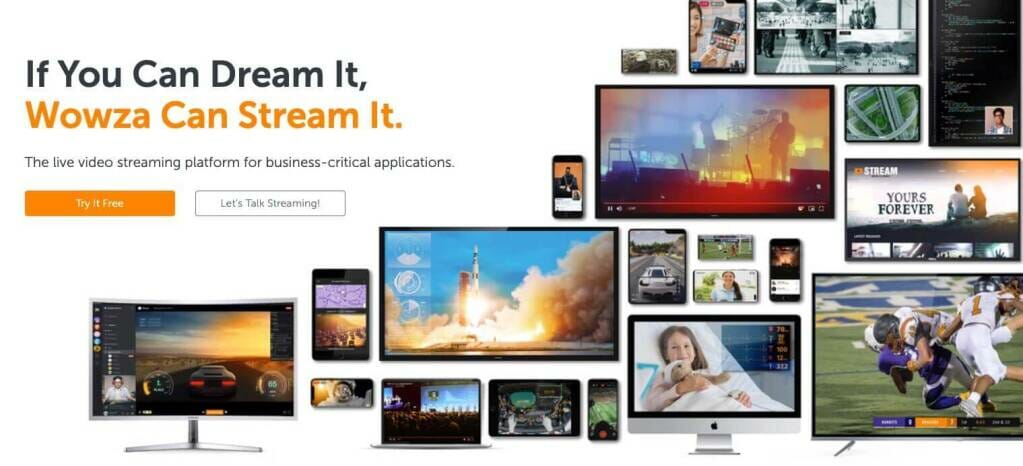
Overview and Company History:
Wowza is another well-established Livestream alternative that launched in 2005. It offers multiple tiers that support streaming, and it’s unlike other platforms because it provides several options for broadcasters looking to take the self-hosted approach.
This feature-rich platform offers a customizable experience for professional-grade video delivery and interactive media applications, such as live events, sports broadcasts, and online media platforms.
Basic Functionality:
Wowza offers two main broadcasting products. The first is the Wowza Streaming Engine software, widely used in the industry for self-hosted streaming.
The second is the Wowza Streaming Cloud, which is a broadcasting service. This functionality includes various features to provide low-latency content access to global audiences. It handles video encoding, storage, and delivery without needing to set up your own server infrastructure.
Wowza also supports multiple streaming protocols like HLS, RTMP, and WebRTC.
Key Features:
- Streaming up to 4K
- Wide range of security options
- Unified streaming solution
- White-label video player
- Mobile-compatible video player
- Reliable support
- RESTful API access
- Live stream recording
- Cloud management portal
Pros:
- Audience engagement tools
- Live or scheduled broadcasting capabilities
- Performance monitoring and analytics
- Reliable video security
- Video Looping
- China video delivery
Cons:
- No simulcasting support
- No monetization options
- Single-source feeds only
- No tools for event scheduling
Upload Guidelines and Specs:
- Minimum dimension: 240p (320 x 240)
- Maximum dimension: 4K (3840 x 2160)
- Aspect ratio: 16:9, 4:3
- Max file size: Not available
- Max video length: Not available
- Total file storage: 250 GB (depends on the plan)
- Compatible video formats: MP4, FLV, MP3, SMIL, AMLST, ID3, NGRP
Pricing:
Wowza Streaming Cloud offers two distinct pricing plans and services. The Wowza Video monthly plans include:
Wowza Video (cloud streaming)
- One Month of Streaming: $149 one-time purchase that includes 15 hours of live streaming and 500 viewing hours at 720p, pay for storage as needed;
- Pay as you go: pay as much as you use or $2.50 per streaming hour and $0.10 per viewer hour;
- Enterprise: Custom pricing with annual plans, 24/7 real-time streaming at scale, discounted rates on hours and storage
All of these Live Event plans include full brand control, multi-bitrate streaming, and HD and UHD streaming.
The Wowza Streaming Engine has its own pricing plan packages. These professional-grade streaming plans are billed annually and include:
- One Month of Streaming: $295/month + $295/month for each additional instance;
- Basic: $195/month + $195/month for each additional instance;
- Enterprise: Please contact Wowza directly for access to their custom-tailored high-volume enterprise solutions;
You can also check out the bandwidth calculator from Wowza to see which plan suits your streaming needs.
If you need 4K live streaming, Wowza is a strong alternative to the now defunct Livestream.
11. StreamYard
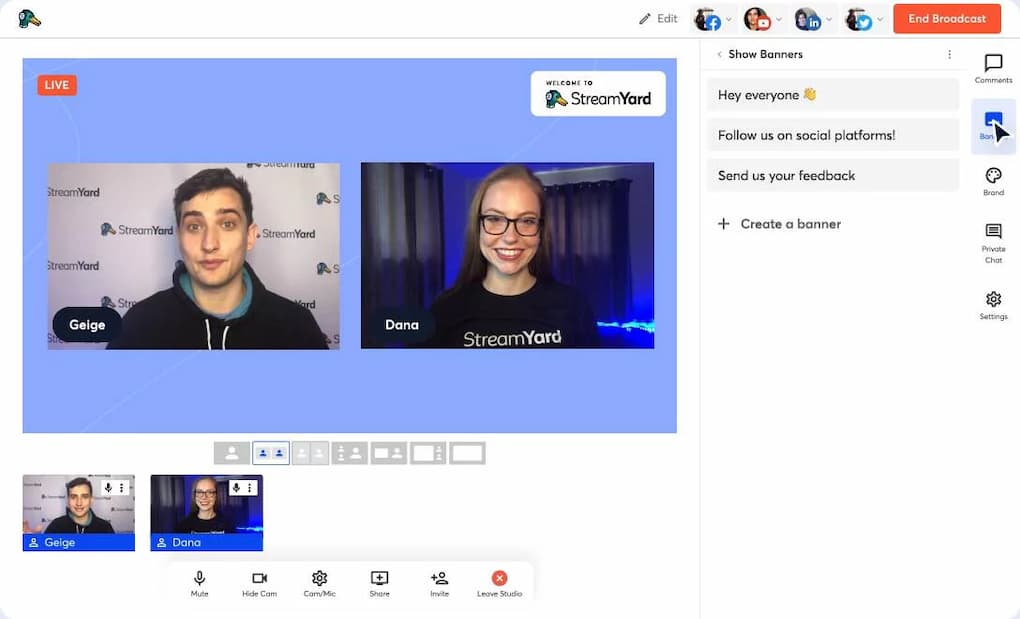
Overview and Company History:
StreamYard is another possible Livestream alternative. It uses in-browser streaming technology, making it suitable for broadcasters with minimal live-streaming needs. It works directly in your browser, so installing any software is unnecessary. In addition to in-browser streaming, StreamYard is known for its brand customization tools.
Its user-friendly interface and cloud-based structure make it a popular choice for both beginners.
Basic Functionality:
StreamYard is a video streaming platform that uses in-browser technology. It allows users to create and broadcast high-quality live streams directly to social media platforms like YouTube, Facebook, LinkedIn, etc. This can improve audience engagement and increase brand awareness.
StreamYard only supports live streaming and does not support VOD hosting.
Key Features:
- In-browser streaming
- Live streaming
- Brand customization
- Graphic overlays
- Simulcasting support
- Multiple-source streaming
- Screen recording
Pros:
- Easy to use
- Great for beginners
- Improves viewer engagement
- Great for collaborative streams
Cons:
- Basic platform
- No monetization support
- No VOD hosting
- Some limitations on browser compatibility
Upload Guidelines and Specs:
- StreamYard does not publish upload guidelines and specs.
Pricing:
As of August 29, 2024, StreamYard no longer offers pricing plans on its website. The company announced that it is restructuring its payment options, which now include a free account and three paid accounts: Core, Advanced, and Teams. To learn more about the cost of each one, contact the StreamYard team.
StreamYard is a great alternative streaming platform for beginners.
12. Hippo Video

Overview and Company History:
Hippo Video is a Livestream alternative that offers special support for specific broadcasting user cases, including marketing, sales, education, and more. It’s often used for sales outreach, customer engagement, and marketing campaigns. Hippo Video is popular with sales teams because of its features that can improve conversion rates by using video to engage with leads and prospects.
This company has plans for broadcasters with a wide range of budgets. Aside from video hosting, Hippo Video is equipped with tools for video editing and creation.
Basic Functionality:
Hippo Video supports live and on-demand video streaming for professionals. It allows users to record, customize, and send videos, often integrating with email or messaging platforms. You can also use it in combination with various CRM tools (like HubSpot and Salesforce).
Key Features:
- Live streaming
- VOD hosting
- Video editing tools
- Brand customization
- Marketing streaming tools
- Screen recording
- Video transcoding
- Closed captioning
- Collaboration tools
- CRM integrations
Pros:
- Video editing and creation tools
- Customization tools
- Marketing tools (including CTAs)
- Video analytics
- Screen recording
- Variety of hosting tools
- 24×5 live global support
Cons:
- Some complaints about tech support
- Complaints of bugginess
- Some glitches in the built-in editor
- The free trial can be misleading
Upload Guidelines and Specs:
- Minimum dimension: 480p
- Maximum dimension: 1080p
- Aspect ratio: not available
- Max file size: 3 GB
- Max video length: 5 minutes on Free plans, 2 hours on Premium plans
- Total file storage: n/a
- Compatible video formats: not available
Pricing:
Hippo Video has two distinct pricing structures for different use cases. Each one has four price tiers. Here’s a breakdown of their pricing:
Video Messaging
- Free: $0, 2 video flows, 10 minutes closed captions, AI editor for 5 videos, 2 sales page templates;
- Pro: $20/month; 5 video flows, 30 minutes closed captions, AI editor for 10 videos, 5 sales page templates;
- Teams: $60/month; 15+ video flows, 200 minutes closed captions, AI editor for 50 videos, 15 sales page templates;
- Enterprise: $80/month; Minimum 10 seats, unlimited video flows, closed captions, video AI editor, and sales page templates. Contact Hippo Video to learn more.
Text-To-Video
- Free: $0, pay-as-you-go: Only $5 for each video creation and 3 video downloads/shares per month;
- Starter: $24/month; pay-as-you-go: Only $5 for each video creation and 10 video downloads/shares per month;
- Creator: $69/month; unlimited video downloads/shares per month;
- Enterprise: Custom payment plan. Contact Hippo Video to learn more.
Hippo Video has the potential to be one of the strong alternatives to Livestream.
13. Cincopa

Overview and Company History:
Another of the Livestream alternatives we’d like to mention is Cincopa. This platform is geared toward organizations that need help storing different types of content and has multimedia hosting support. Cincopa also offers support for live streaming in addition to the media hosting tools.
This platform is equipped with a variety of features that broadcasters need for a professional streaming experience. Some of these features include video monetization, stream recording, OTT streaming, powerful content delivery, and more.
Businesses, marketers, and content creators commonly use Cincopa to showcase their media content in a professional, interactive, and user-friendly way. Cincopa also supports integrations, allowing broadcasters to customize their streaming experience fully.
Basic Functionality:
Cincopa supports different types of media hosting, including video, audio, and images, and live streaming. The platform provides customizable player themes, analytics tools, and integrations with other platforms.
Key Features:
- Multimedia hosting
- Live streaming
- Reliable video player
- Video monetization tools
- Integrations and customizations
- OTT streaming
- CDN partnerships for reliable content delivery
- Secure streaming
Pros:
- High-quality streaming
- Unified streaming solution
- Wide range of powerful tools
- Customizable streaming
- Reliable customer support
Cons:
- Live streaming is a secondary offering
- Limited media storage on most plans
Upload Guidelines and Specs:
- Minimum dimension: 144p
- Maximum dimension: 4K
- Aspect ratio: 4:3, 16:9
- Max file size: 1, 2, 20GB (depending on the plan)
- Max video length: not available
- Total file storage: 5 videos, 40 videos, unlimited videos (depending on the plan)
- Compatible video formats: AVI, MOV, WMV, MP4, M4A, F4A, F4B, F4V, F4P, M2TS, MTS, VOB, MKV, RMVB, M1V, QT, DIV, DIVX, DV, 3GP, 3GPP, 3G2, MPG, MPEG, MPE, FLV
Pricing:
Cincopa offers four different pricing plans, including:
- Plus: $25/month; includes marketing tools (CTAs, email integrations, etc.);
- Corporate: $99/month; advanced broadcasting tools;
- Enterprise: $350/month; advanced broadcasting tools with more flexibility;
- Custom Enterprise: Contact sales for more information.
Please check out Cincopa’s pricing page for a further breakdown of storage and capabilities that come with each plan.
Cincopa is great if you need somewhere to host video content, as well as audio and image content.
14. Wistia

Overview and Company History:
Broadcasters who are looking for a Livestream alternative that focuses on VOD hosting should consider Wistia. This platform is a scalable video hosting service that is well-suited for broadcasters who expect to grow their streaming operations.
Wistia is primarily for businesses and marketers to host, manage, and analyze video content. It makes a great tool for video marketing. The platform’s CTAs, annotation links, and email features are among its top-selling points. It is also equipped with custom players that allow you to add your logos and branding.
Basic Functionality:
Wistia’s basic functionality is on-demand video hosting. This platform does not support live streaming. It provides a range of tools to help users create, customize, and track video performance for their websites or marketing campaigns. The platform has in-depth video analytics, showing who watched the video and which parts of the video were most engaging.
Key Features:
- Video hosting and management
- Custom video players
- Easy embedding
- Interactive video tools
- Ad-free streaming
- Channels for organization
- “Up Next” feature
- Subscription tools
- CRM integrations
- Video analytics and reporting
- Video SEO
Pros:
- Tools for brand customization
- Powerful analytics
- Features to improve viewer engagement
- Automated video SEO
- Reliable tech support
Cons:
- Some complaints about glitchiness with customization tools
- No live streaming
- No China delivery
Upload Guidelines and Specs:
- Minimum dimensions: None
- Maximum dimensions: Maximum of 4K (3840 x 2160)
- Supported aspect ratios: Any
- Maximum file size: 8 GB
- Maximum video length: 2 hours
- Total file storage: Up to 10 videos with the Pro plan, $0.25 per month for every extra video
- Accepted video formats: MP4 (recommended format), .MOV, .AVI, .WMV, .FLV, .MKV, 3GPP
Pricing:
Wistia has one free plan and three paid pricing plans, including:
- Free: No cost to use; up to 10 videos; cannot remove the Wistia branding from the video player;
- Plus: $19/month, 20 free videos with additional videos for $2/each; white-label video player;
- Pro: $79/month; 50 free videos with additional videos for $0.25/each; white-label video player, webinar hosting;
- Advanced: $319/month; 250 free videos with additional videos for $0.5/each; multiple channels, marketing integrations;
15. Uscreen

Overview and Company History:
Uscreen is a Livestream alternative that has a special focus on OTT technology. It allows users to host, stream, and monetize video content through subscriptions, pay-per-view, or video-on-demand models.
The platform is especially popular among content creators, educators, fitness trainers, and other professionals who want to distribute video content directly to their audience. They use it to stream both live and on-demand video content.
Basic Functionality:
Uscreen is primarily used for marketing and educational content. Users can brand their video players to align with their business or personal brand. It has plenty of built-in features for email marketing, affiliate programs, and promotions.
Key Features:
- Live streaming
- VOD hosting
- OTT technology
- Tools for marketing
- Powerful video analytics
- Tools for engagement
- Fee-based video monetization
- Secure streaming
Pros:
- Simple but comprehensive platform
- Reliable platform
- Time-saving tools
- Powerful video management
Cons:
- Some complaints about the user interface
- Slow customer support
Upload Guidelines and Specs:
- Recommended dimensions: 1080p/2k or smaller
- Supported aspect ratios: 16:9
- Maximum file size: 13 GB
- Maximum video length:
- Total file storage: 3000, 7500, 7500+ minutes
- Accepted video formats: MP4 (Recommended)
Pricing:
Uscreen has three different monthly pricing plans for broadcasting, including:
Growth:
- $199/month + $1.99 per paid subscriber per month;
- It supports up to 1 hour of live streaming and a Netflix-style video catalog;
- 100 hours of video storage;
- Includes 1 admin user;
- Email support;
App Essentials:
- $499/month + 0.99 per paid subscriber per month;
- Supports up to 1 hour of live streaming and a Netflix-style video catalog;
- Community of up to 5 channels;
- Your own mobile app;
- 100 hours of video storage;
- Email and chat support;
Custom Pricing:
- Interested users must request a quote from Uscreen;
- Custom live-streaming packages;
- White-label branding;
- TV streaming apps;
- API Access;
16. Castr
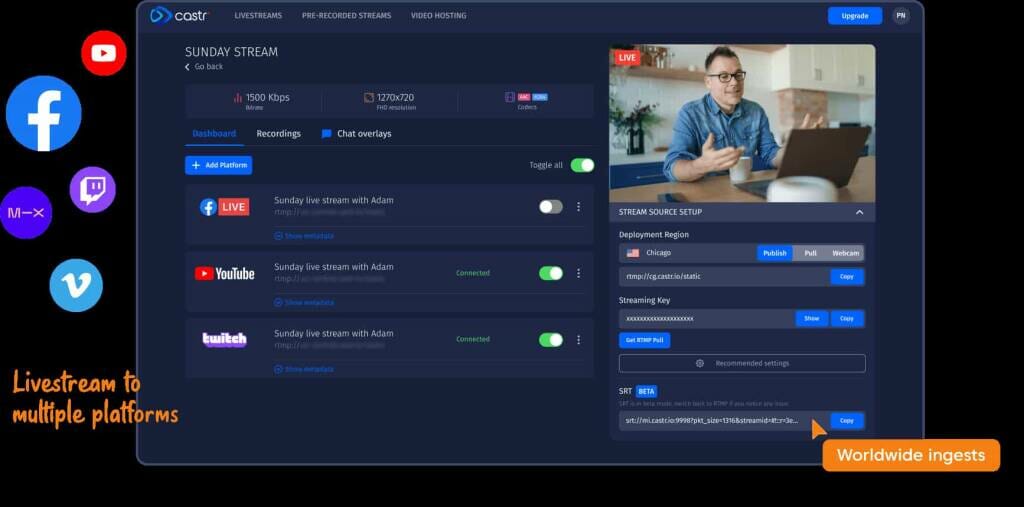
Overview and Company History:
Castr is a cloud-based live streaming platform with multi-platform streaming and audience engagement. It was founded in 2018 with the aim of simplifying the streaming process. Castr is known for its robust capabilities in delivering high-quality streams to multiple destinations simultaneously.
It’s popular among professional broadcasters, content creators, and businesses. The platform is used for live-streaming events, webinars, conferences, and gaming, among other applications.
Basic Functionality:
Castr offers features like multi-streaming, screen recording, and live chat integration. Users can also record their streams for on-demand access, giving audiences the flexibility to watch later.
Castr is web-based, meaning you don’t need any additional software to stream. It also supports streaming in high-definition formats, making it accessible for both beginners and professionals.
Key Features:
- Multi-streaming to various platforms
- Live chat integration
- On-demand recording
- Real-time video analytics
- Custom branding options
- Cloud storage for recorded streams
- Dedicated 24/7 support
- Secure streaming with SSL encryption
- Transcoding
- Pay-per-view streaming
- Live video monitoring
Pros:
- User-friendly interface
- Multi-destination streaming
- Great for event broadcasting and webinars
- Real-time analytics to track stream performance
- Customizable branding and video players
Cons:
- The free plan has limited features
- Some advanced features are locked behind higher-tier plans
- Limited integrations with third-party platforms
Upload Guidelines and Specs:
- Castr supports streaming in resolutions up to 1080p and has a maximum video bitrate of 10 Mbps.
- Recommended video formats: MP4, MOV, and AVI.
- Maximum file size for uploads depends on the plan.
Pricing:
Castr is one of the few Livestream competitors that truly offers price plans that fit everyone’s budget. It has five packages you can pay for annually, which are:
- Starter: $12.5 /month; It includes 2.4 TB upfront bandwidth and 100 GB video storage;
- Standard: $33.5 /month; It includes 6 TB upfront bandwidth and 200 GB video storage;
- Professional: $62.5 /month; It includes 24 TB upfront bandwidth and 1 TB video storage;
- Premium: $104.5 /month; It includes 36 TB upfront bandwidth and 2 TB video storage;
- Ultra: $250 /month; It includes 60 TB upfront bandwidth and 6 TB video storage;
Users also have the option to get a custom pricing plan by contacting the Castr sales team.
17. Restream

Overview and Company History:
Restream is a popular ready-to-use platform for multi-streaming and broadcasting live video across multiple platforms simultaneously. Founded in 2015, it quickly gained traction among broadcasters who want to expand their reach by streaming to multiple destinations at once.
Restream is easy to use and has a robust set of features. It also supports streaming on a wide range of social media and streaming platforms
Basic Functionality:
Restream offers cloud-based streaming technology that allows users to stream live content to over 30 platforms simultaneously. It offers tools for live streaming, audience interaction, and brand customization.
Restream is compatible with streaming software like OBS and Streamlabs, and it allows users to integrate chat features and analytics directly into their dashboard.
Key Features:
- Multi-streaming to over 30 platforms
- Cloud-based streaming (no installation required)
- Customizable branding options (logos, overlays, etc.)
- Chat integration and audience interaction tools
- Live video analytics
- Stream scheduling and pre-recorded streaming
- Guest streaming and collaborative tools
Pros:
- Simple, user-friendly interface
- Multi-platform streaming capabilities to maximize audience reach
- No need for hardware or software installation due to the cloud-based setup
- Customization options for branding and viewer engagement
Cons:
- Limited editing tools compared to other platforms
- The free version has restrictions on streaming quality and watermarking
- Some limitations in stream latency for large-scale events
Upload Guidelines and Specs:
- Maximum video resolution: 1080p
- Supported file formats: MP4, MOV, and more
- Maximum file size: Varies by plan
Pricing:
Restream’s pricing plans are quite simple and also some of the most affordable ones we’ve seen for such a platform. They include four tiers:
- Free: $0/forever; It includes multistreaming on 2 channels and local recording;
- Standard: $16/month; It includes multistreaming on 3 channels and unlimited cloud recording;
- Professional: $39/month; It includes multistreaming on 5 channels and split audio/video downloads;
- Business: $199/month; It includes multistreaming on 8 channels, 30-day recording storage, etc.
If you choose the annual payment plan over the monthly one, you also get two months for free.
18. Streamlabs

Overview and Company History:
Streamlabs started as a tool for stream overlays and widgets but has since evolved into a comprehensive live streaming suite. In 2019, Logitech acquired Streamlabs, allowing it to further develop and integrate a range of tools for streamers, from donation management to alerts, to create an all-in-one broadcasting platform.
It’s a popular live-streaming platform for gamers, content creators, and influencers. They often use it alongside Twitch, YouTube, and Facebook Gaming.
Basic Functionality:
Streamlabs’ platform integrates with popular streaming services. Users can easily broadcast live streams by customizing them with overlays, alerts, and transitions.
The Streamlabs software works as a desktop application for both Windows and macOS. It provides features like stream monitoring, viewer interaction tools, and multi-streaming support.
Key Features:
- Customizable overlays and alerts
- Integration with Twitch, YouTube, and Facebook Gaming
- Multi-streaming capabilities
- Donation management
- Streamlabs Cloudbot for automation and moderation
- In-app store with themes, overlays, and widgets
- Mobile streaming app
- Stream health and analytics
Pros:
- Highly customizable with overlays, alerts, and themes
- Beginner-friendly with many free resources
- Seamless integration with major streaming platforms
- Built-in donation and monetization features
- Cloud-based backup for stream settings and alerts
Cons:
- Can be resource-heavy on computers, leading to potential lag
- Advanced features locked behind a subscription
- Slow customer support at times
Upload Guidelines and Specs:
- Resolution: Supports 1080p streaming at 60fps
- Bitrate: Variable bitrate based on internet speed
- File formats: MP4, MOV, and FLV supported
Pricing:
Streamlabs is free to download and use but to access its more advanced features and functionalities, you’ll need a Streamlabs Ultra subscription, which starts at $27/month.
19. Wirecast

Overview and Company History:
Wirecast is professional-grade live streaming and video production software developed by Telestream. It has been in use since 2004 and is widely recognized for its versatility in live broadcasting.
A variety of industries use Wirecast, including entertainment, education, and news organizations, because it offers high-quality all-in-one streaming solutions. It is available for macOS and Windows platforms.
Basic Functionality:
Wirecas lets users capture, produce, and stream live video to multiple platforms. The software features advanced production tools, such as multi-camera switching, video recording, and live streaming to multiple destinations simultaneously.
Wirecast also integrates with other production systems, becoming a comprehensive solution for live events, webinars, and broadcasts.
Key Features:
- Multi-camera switching
- Live video streaming and recording
- Simulcasting to multiple platforms
- Built-in graphics and transitions
- Virtual sets and green screen support
- Audio mixing and monitoring
- Instant replay and slow-motion features
- Video production tools and real-time streaming analytics
Pros:
- Highly versatile and professional-grade
- User-friendly interface for beginners
- Advanced features for professionals
- Reliable live streaming with low latency
- Excellent video and audio quality
- Great for multi-camera setups and live events
Cons:
- High system requirements for smooth operation
- Steeper learning curve for new users
- No native cloud support for storage and backup
Upload Guidelines and Specs:
- Minimum dimension: 480p
- Maximum dimension: 4K (3840×2160)
- Supported aspect ratios: 16:9, 4:3
- Max file size: Dependent on system storage
- Max video length: Not limited
- Accepted video formats: MP4, MOV, AVI, and more
Pricing:
Wirecast’s pricing plans are quite simple. Users can choose between the following two packages:
- Wirecast Studio: $29.08/month;
- Wirecast Pro: $37.42/month.
Wirecast offers a detailed overview of what each package includes.
20. Enveu

Overview and Company History:
Enveu is a streaming platform for OTT content providers. It specializes in end-to-end solutions for content delivery, including live streaming, VOD hosting, and monetization features.
The platform is primarily used by businesses, content creators, and broadcasters who need a scalable streaming solution with monetization.
Founded with the aim of simplifying streaming and making it accessible for all types of media producers, Enveu is now a trusted service for large and small broadcasters.
Basic Functionality:
Enveu has a suite of features that support live and on-demand video streaming. You can use it to manage, deliver, and monetize video content across devices and platforms. It also supports various monetization models, including subscriptions, pay-per-view, and ad-based revenue streams.
It can seamlessly integrate with video players, content management systems, and analytics tools. Additionally, Enveu supports live-streaming events and content protection features for secure content delivery.
Key Features:
- Live streaming and VOD hosting
- Monetization support (SVOD, AVOD, and TVOD)
- Content management and analytics
- Customizable video player
- Multi-device compatibility
- DRM support
- CDN integration
- API and third-party integrations
Pros:
- Scalable platform for growing streaming businesses
- Advanced monetization options
- High level of customization and flexibility
- Strong content protection features
Cons:
- Can be complex for beginners
- Higher pricing tiers may be expensive for smaller broadcasters
Upload Guidelines and Specs:
- Supported file formats: MP4, MOV, AVI
- Maximum file size: 50 GB
- Recommended resolution: 1080p or higher
- Supported aspect ratios: 16:9, 4:3
Pricing:
Currently, Enveu offers three annual pricing options:
- Lite: $549/month;
- Professional: Book a call with Enveu for more information;
- Enterprise: Book a call with Enveu for more information;
Frequently Asked Questions
1. What is Livestream?
Livestream was a premium video hosting and live-streaming platform owned by Vimeo. However, unlike Vimeo’s standard plans, Livestream was more suited for professional broadcasters. It had more robust features, great security, and customer support compared to most free tools.
This made it a go-to tool for professional content creators and B2B businesses in the industry, such as companies with bigger streaming needs and more advanced broadcasters. In 2024, Vimeo announced that it was shutting down Livestream, leaving users scrambling to find alternatives.
2. Is there a free alternative to Livestream by Vimeo?
If you’re looking for a budget-friendly streaming solution, you can use several video hosting platforms instead of Livestream. These include YouTube, Facebook Live, Instagram Live, and Daily Motion.
However, these platforms do not guarantee a similar level of quality streaming as they’re not quite suitable for a professional audience. So, if you’re looking for a professional broadcasting tool, paid options such as Dacast, Wistia, and StreamShark may be preferable.
3. Why should you look for Livestream alternatives?
Livestream was a great option for many professional broadcasters. Even when it was still operational, it had several shortcomings that made it unsuitable for some. Besides the obvious one, here are a few reasons people were looking for Livestream alternatives:
- The cost of Livestream was too high for users on a budget.
- Livestream customization features were quite limited compared to some white-label streaming platforms.
- Livestream’s plans came with bandwidth limitations that affected the quality of live streams.
- For businesses looking for advanced analytics for in-depth performance evaluation, Livestream’s analytics were too basic.
- Livestream could not integrate fully with different marketing and customer relationship management tools.
- The Livestream platform provided limited monetization options.
4. Which platform is the best alternative to Vimeo Livestream?
Here are some of the top alternatives to Livestream by Vimeo that professional businesses can explore:
- Dacast
- Brightcove
- StreamShark
- JW Player
- IBM Cloud Video
- Kaltura
- Muvi
- Panopto
- Vidyard
5. What is the difference between YouTube and Vimeo?
Although both Vimeo and YouTube are well-known video hosting services, they cater to different audiences. Vimeo’s comprehensive analytics, greater privacy options, and ad-free viewing experience make it a popular choice among professionals and businesses. On the other hand, YouTube is more widely used, has a larger user base, and offers greater visibility and social sharing opportunities.
Final Thoughts
Livestream was a great streaming platform, but unfortunately, its life ended in late 2024. This left a gap in the streaming market that users are trying to fill with other options. Luckily, several live-streaming platforms are available that serve as viable alternatives to Livestream. Each one is unique in its specific feature offerings and price points.
When choosing the best live-streaming platform for your business, we recommend making a list of your broadcasting goals and identifying which features you need to achieve them. Free trials are a great way to test the waters.
Not sure where to start? Sign up for a free trial of Dacast to access our platform risk-free for 14 days. You can start streaming in minutes. No credit card is required.
 Stream
Stream Connect
Connect Manage
Manage Measure
Measure Events
Events Business
Business Organizations
Organizations Entertainment and Media
Entertainment and Media API
API Tools
Tools Learning Center
Learning Center Support
Support Support Articles
Support Articles